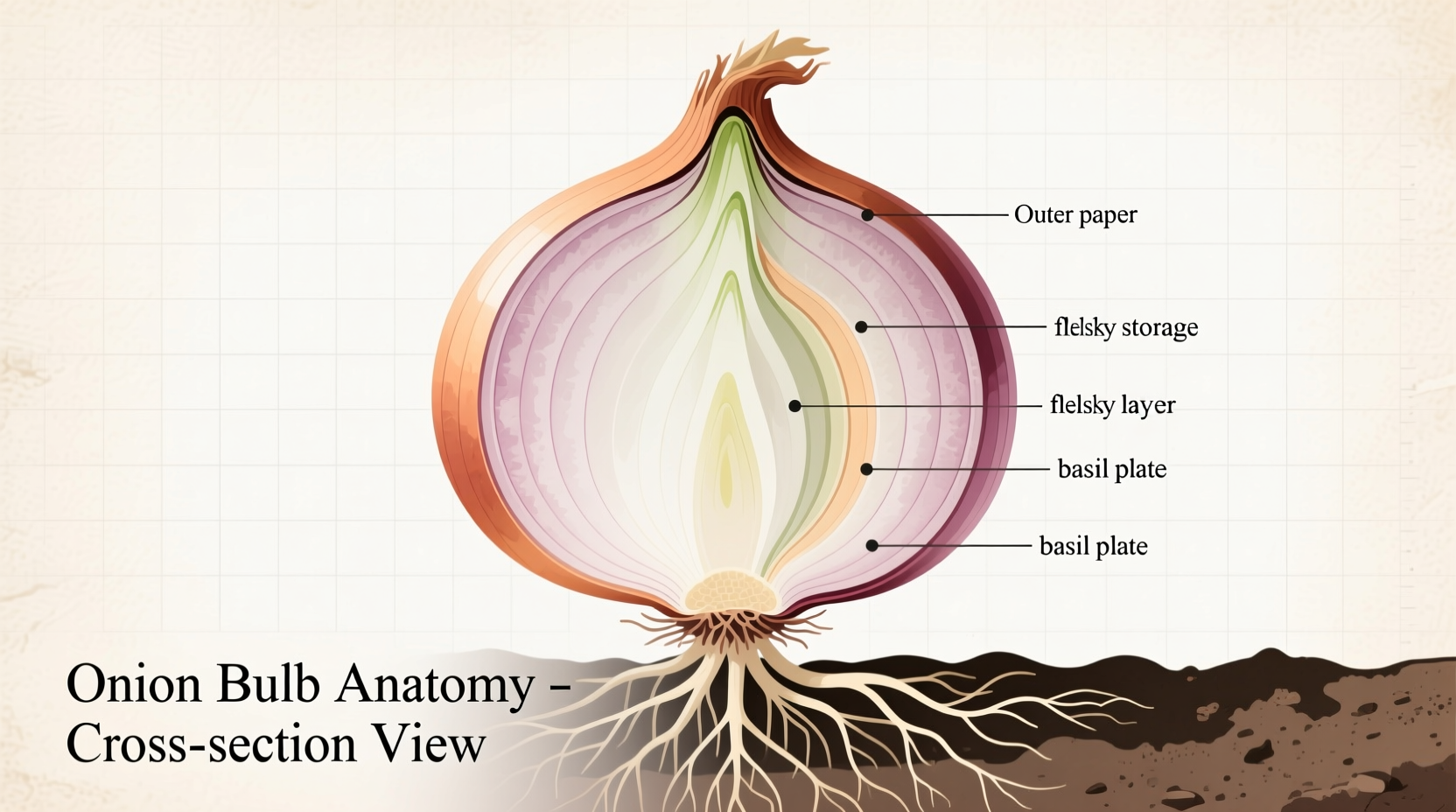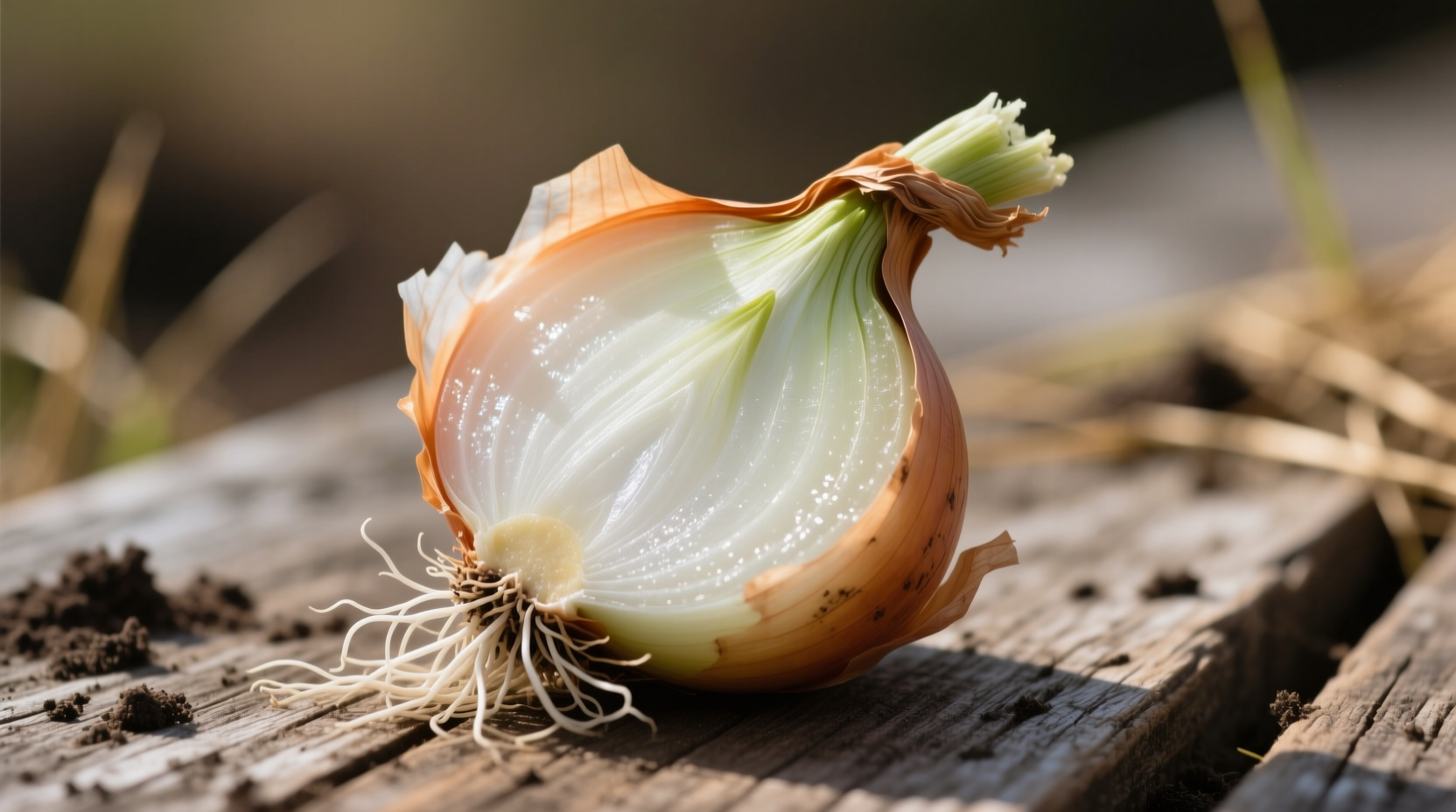What You'll Gain From This Guide
Discover exactly how onion bulbs develop, why some varieties last longer in storage, and professional techniques to maximize flavor in your cooking. Whether you're selecting bulbs at the market or troubleshooting garden issues, this guide delivers actionable insights backed by agricultural science and culinary expertise.
Understanding Onion Bulb Formation
Onion bulbs begin as seedlings with thin green shoots. As daylight increases to 12-14 hours (depending on variety), the plant shifts energy from leaf growth to bulb development. The leaf bases swell with water and carbohydrates, creating the concentric layers we recognize as bulbs. This photoperiod-sensitive process explains why planting times vary by region – short-day varieties form bulbs with 10-12 hours of light, while long-day types require 14-16 hours.
| Variety Type | Day Length Trigger | Best Growing Regions | Storage Duration |
|---|---|---|---|
| Short-Day | 10-12 hours | South of 36°N latitude | 2-3 months |
| Intermediate-Day | 12-14 hours | 32°-42°N latitude | 3-5 months |
| Long-Day | 14-16 hours | North of 36°N latitude | 6-8 months |
This classification system, documented by the USDA Agricultural Research Service, explains why onions purchased in southern states often don't store well when taken north – they're typically short-day varieties bred for warmer climates.
Onion Bulb Development Timeline
Understanding the growth stages helps diagnose garden problems and optimize harvest timing:
- Germination (7-14 days): Seeds sprout thin green shoots
- Leaf Development (4-6 weeks): 8-12 leaves form, establishing photosynthetic capacity
- Bulb Initiation (triggered by day length): Leaf bases begin swelling at stem plate
- Bulb Enlargement (3-6 weeks): Rapid layer formation as sugars accumulate
- Maturation (2-3 weeks): Tops fall over, necks dry, outer layers become papery
Commercial growers monitor this progression carefully. According to Cornell University's College of Agriculture and Life Sciences, harvesting too early produces bulbs with poor storage potential, while delaying causes double centers or rot at the neck.

Selecting Quality Onion Bulbs
Whether shopping or harvesting, look for these quality indicators:
- Firmness: Squeeze gently – no soft spots or give
- Dry Neck: The top should be completely dry and tight
- Papery Skin: Outer layers should be crisp, not leathery or moldy
- No Sprouting: Green shoots indicate aging and flavor loss
- Heavy for Size: Indicates high water content and freshness
Globe onions (the common supermarket variety) should feel solid with minimal space between layers. Specialty varieties like shallots have tighter clusters, while red onions often show more visible layer definition.
Optimal Storage Conditions
Proper storage dramatically extends shelf life. Research from the University of California's Agricultural and Natural Resources department shows these critical factors:
| Condition | Ideal Range | Consequences of Deviation |
|---|---|---|
| Temperature | 32-45°F (0-7°C) | Warmer: Sprouting; Colder: Freezing damage |
| Humidity | 65-70% | Higher: Mold growth; Lower: Excessive drying |
| Airflow | Continuous gentle circulation | Poor: Moisture buildup and rot |
Never store onions near potatoes – potatoes release moisture and ethylene gas that accelerate onion sprouting. For home storage, use mesh bags in a cool, dark pantry rather than plastic containers that trap moisture.
Culinary Applications by Bulb Type
Different onion varieties excel in specific cooking applications due to their sugar and sulfur content:
- Yellow Onions (87% of U.S. production): High sulfur content creates rich caramelization. Ideal for soups, stews, and French onion soup. The USDA reports they contain 4-5% sugar by weight.
- Red Onions: Milder with anthocyanin pigments. Best raw in salads or quick-pickled. Their color fades when cooked long.
- White Onions: Crisp texture and clean flavor. Preferred for Mexican cuisine and fresh salsas. More perishable than yellow varieties.
- Sweet Onions (Vidalia, Walla Walla): 5-6% sugar content with low pyruvic acid. Perfect for onion rings or raw applications. Require refrigeration after cutting.
Professional chefs like those at the Culinary Institute of America recommend chilling onions for 30 minutes before cutting to reduce lachrymatory factor release – the compound that makes you cry. Cut root-end last to minimize vapor dispersion.
Common Onion Bulb Problems
Understanding these frequent issues helps troubleshoot storage and garden problems:
Sprouting
Occurs when bulbs experience warm temperatures after dormancy. The USDA notes that temperatures above 50°F (10°C) trigger sprouting. Remove sprouts immediately – the bulb remains edible but has reduced storage life.
Neck Rot
Caused by improper drying before storage. Cornell University extension data shows this accounts for 15-20% of home storage losses. Prevent by allowing onions to cure for 2-3 weeks in warm, dry conditions with good airflow before storing.
Internal Browning
Often develops during prolonged storage. Research from UC Davis indicates this enzymatic browning affects 5-8% of stored bulbs after 6 months. It's harmless but indicates aging – use affected onions first.
When Storage Methods Fail: Context Boundaries
Not all storage recommendations work universally. These context boundaries explain why certain methods succeed or fail:
- Refrigeration works for sweet onions (high water content) but causes condensation damage in storage onions
- Mesh bags improve airflow in humid climates but may dry bulbs too quickly in arid regions
- Curing prevents rot in garden-harvested onions but is unnecessary for commercially cured bulbs
- Refrigeration after cutting preserves freshness but alters texture in raw applications
Understanding these nuances prevents common mistakes that lead to wasted produce. The optimal approach depends on your specific onion variety, climate, and intended use.
Practical Tips for Maximum Flavor
Apply these professional techniques to enhance your cooking:
- Layer utilization: Outer layers have stronger flavor – use for stocks; inner layers are milder for raw applications
- Cutting direction: Slice parallel to growth rings for milder flavor; perpendicular for stronger taste
- Sweating technique: Cook over low heat with lid on for 10 minutes to draw out moisture before browning
- Acid balance: Add vinegar or citrus after cooking to brighten flavors without harshness
These methods leverage the natural chemistry of onion bulbs to control flavor intensity. The sulfur compounds responsible for pungency transform when heated, creating the sweet, complex notes essential to countless dishes worldwide.











 浙公网安备
33010002000092号
浙公网安备
33010002000092号 浙B2-20120091-4
浙B2-20120091-4